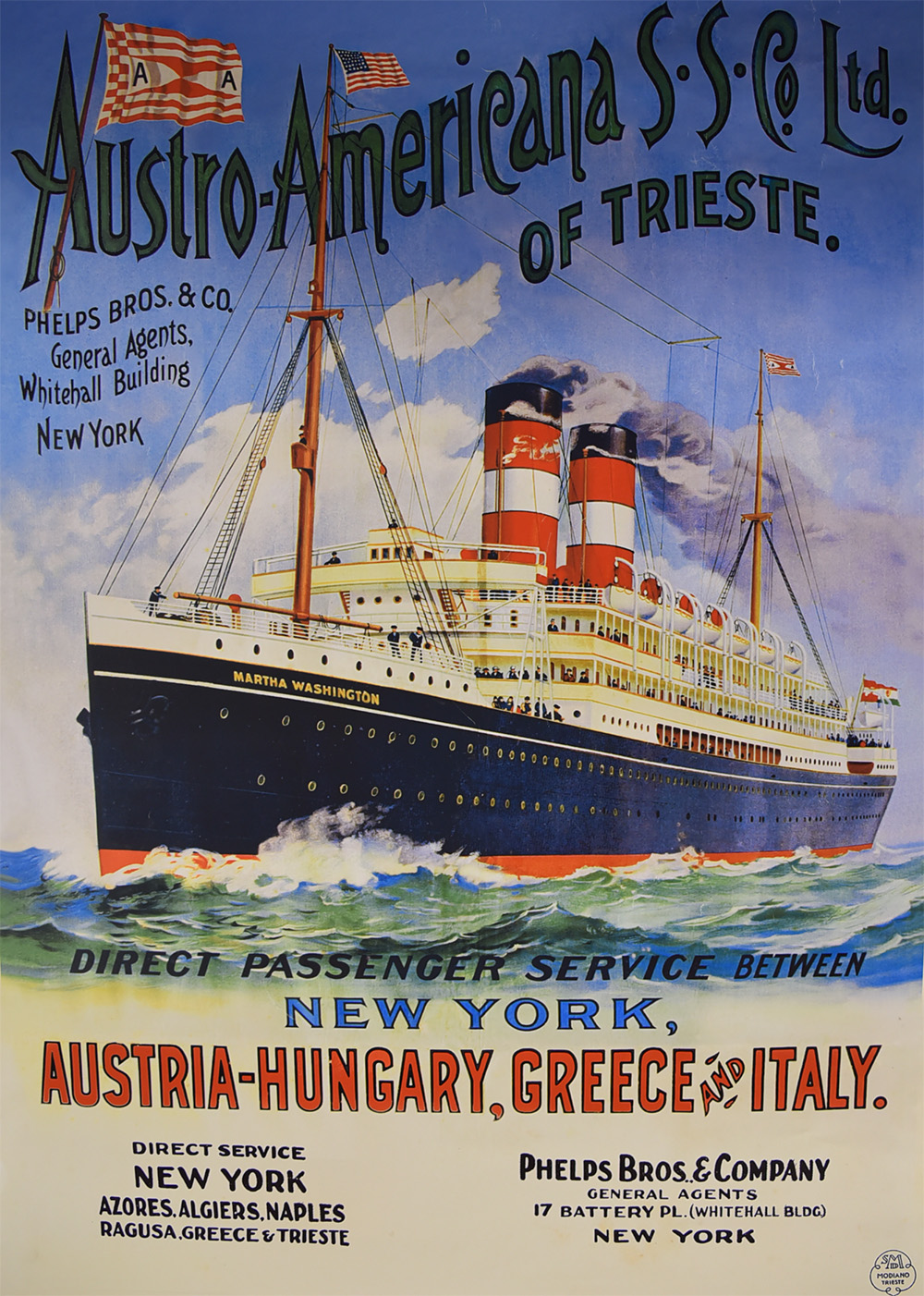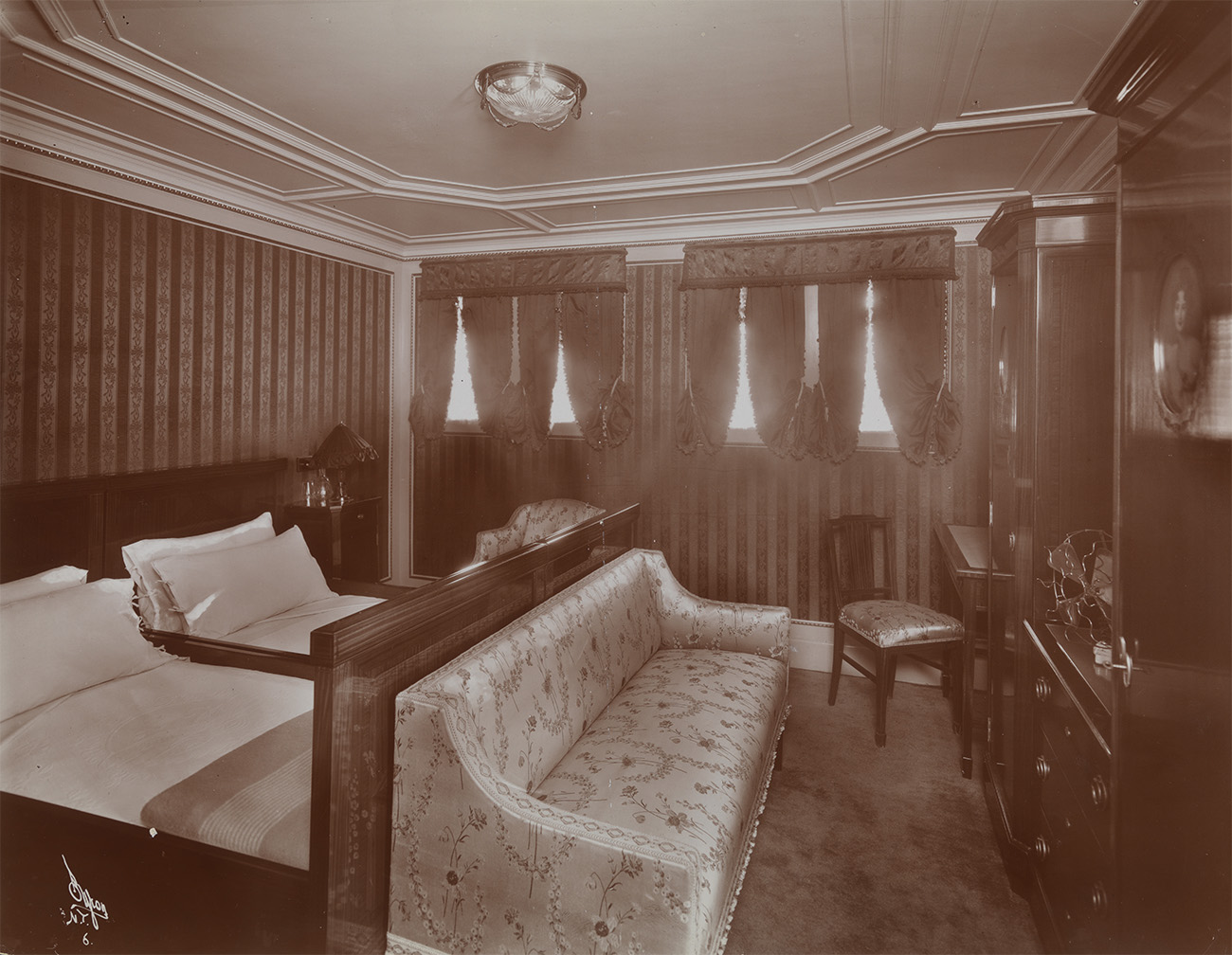Austro-Americana Line
From the first Austrian settlers in Georgia to the big immigration waves in the 19th and early 20th centuries, the dominant method of transportation was the ocean-going ship. The steam engine in particular, as well as subsequent development of ever bigger ocean liners, turned out to be quintessential enablers of European and Austrian emigration in significant numbers.
Many of these big liners in transatlantic service were operated by British, German or Dutch companies, and over the years they carried millions of European emigrants to the United States and Canada, among them many Austrians. However, at the beginning of the 20th century, an Austrian shipping company joined the bee-line from Europe to America and back.
Austro-Americana Line was founded in 1895 by the Austrian hauler Gottfried August Schenker and Scottish shipping merchant William Burell to establish a freight line between Austria and North America, initially with an eye on supplying the Austrian textile and cotton industry. The company was headquartered in the port city of Trieste, Italy, then part of Austria-Hungary. It was also known as Unione Austriaca di Navigazione, Unione Austriaca, and later as the Cosulich Line, but is most commonly referred to as Austro-Americana.
Eventually, the company provided both freight and passenger services to many ports in North and South America. The outbreak of World War I marked the looming end for Austro-Americana in its original form: ships were either impounded, shot at by enemy nations or were put into service for the Austrian Navy. After the war, in 1918, only ten ships remained, and since the home port of Trieste came under Italian control, the company was assumed by the Cosulich family, operated as Cosulich Line from this point forward and service to the Americas was eventually resumed.
Whale hits liner and kills itself
Raised and Shook Kaiser Franz Josef, Over Titanic Grave, as if by a Tidal Wave
Headline and article from The New York Times, published on July 27, 1913
The Austro-American Liner Kaiser Franz Josef came into port yesterday with a large number of passengers, much cargo, and a story of a whale of great proportions, which tried to butt the bottom out of the big liner, and died in the attempt. The Kaiser Franz Josef was shaken to such an extent that the skipper, all of his junior officers, half of the crew, and scores of the passengers rushed on deck in apprehension. Not until the dead body of the giant mammal was seen floating away to windward did the skipper and his men know what had been under them.
The account of the whale is vouched for by no less an authority than Gustav Millimoth, the First Officer of the Kaiser Franz Josef, who at the time of the commotion happened to be entering on the log the fact that the big liner was at the moment passing over the grave of the Titanic. While he was still making his entry, the liner suddenly lurched upward, as if lifted by a tidal wave. The ship shook from the stern, and Capt. Gerolomich, who was in his cabin, jumped to the bridge.
The passengers deserted smoker room lounges and the state room and crowded the decks. In about five minutes the cause of all the trouble floated from under the ship. It was a whale at least seventy feet long, and a great gash in the middle of his back showed what the collision with the steamship had done to it. Those of the passengers who had cameras snapshotted the dead monster, and these photographs were shown yesterday. They showed a giant whale floating in the water, and a close look made it possible to see the great wound that ended his life.
The Kaiser Franz Josef had among her passengers the Baron Bela von Hazan, a son of the Hungarian Minister of War. Baron von Hazan is here on a short vacation, the principal object of which is a chance to view Niagara Falls. He saw the whale.





